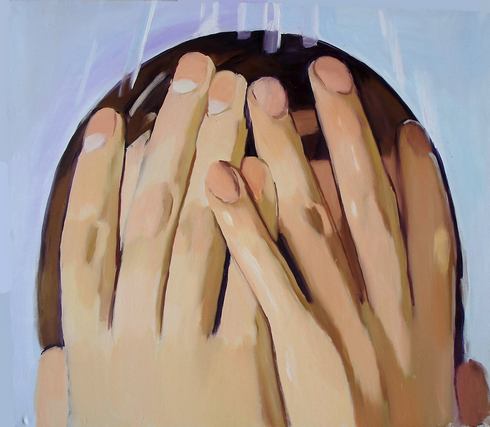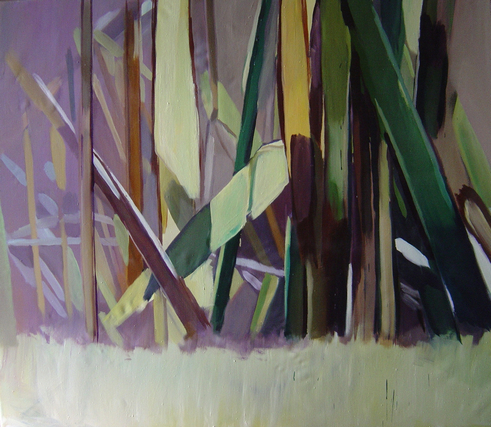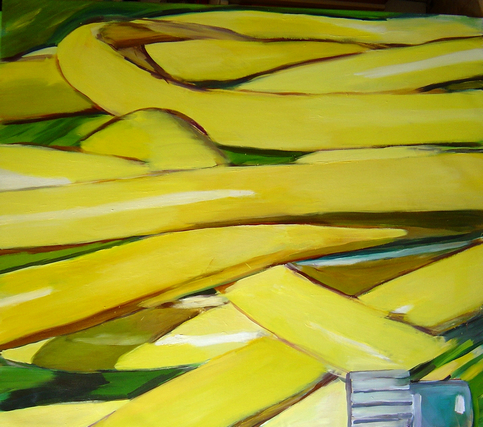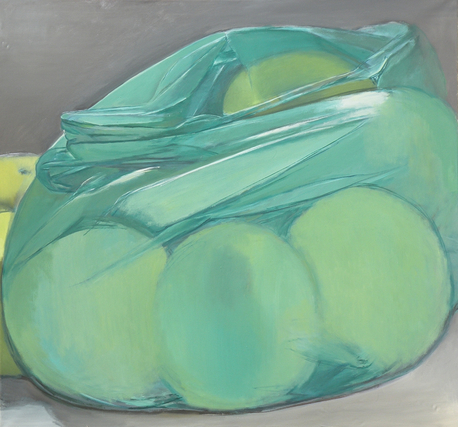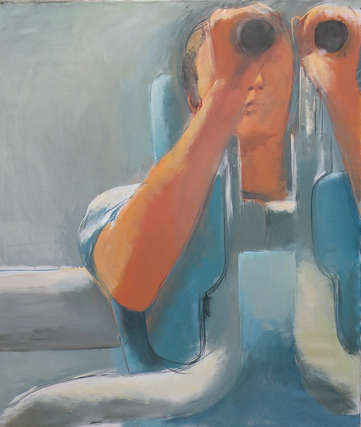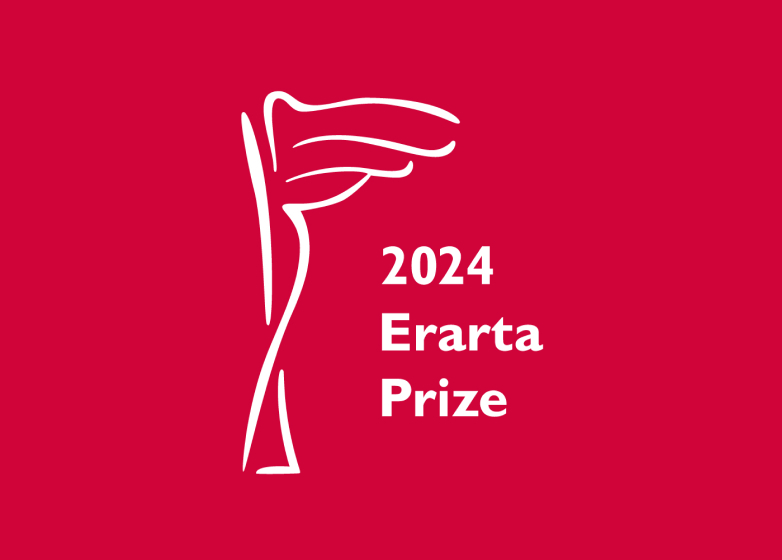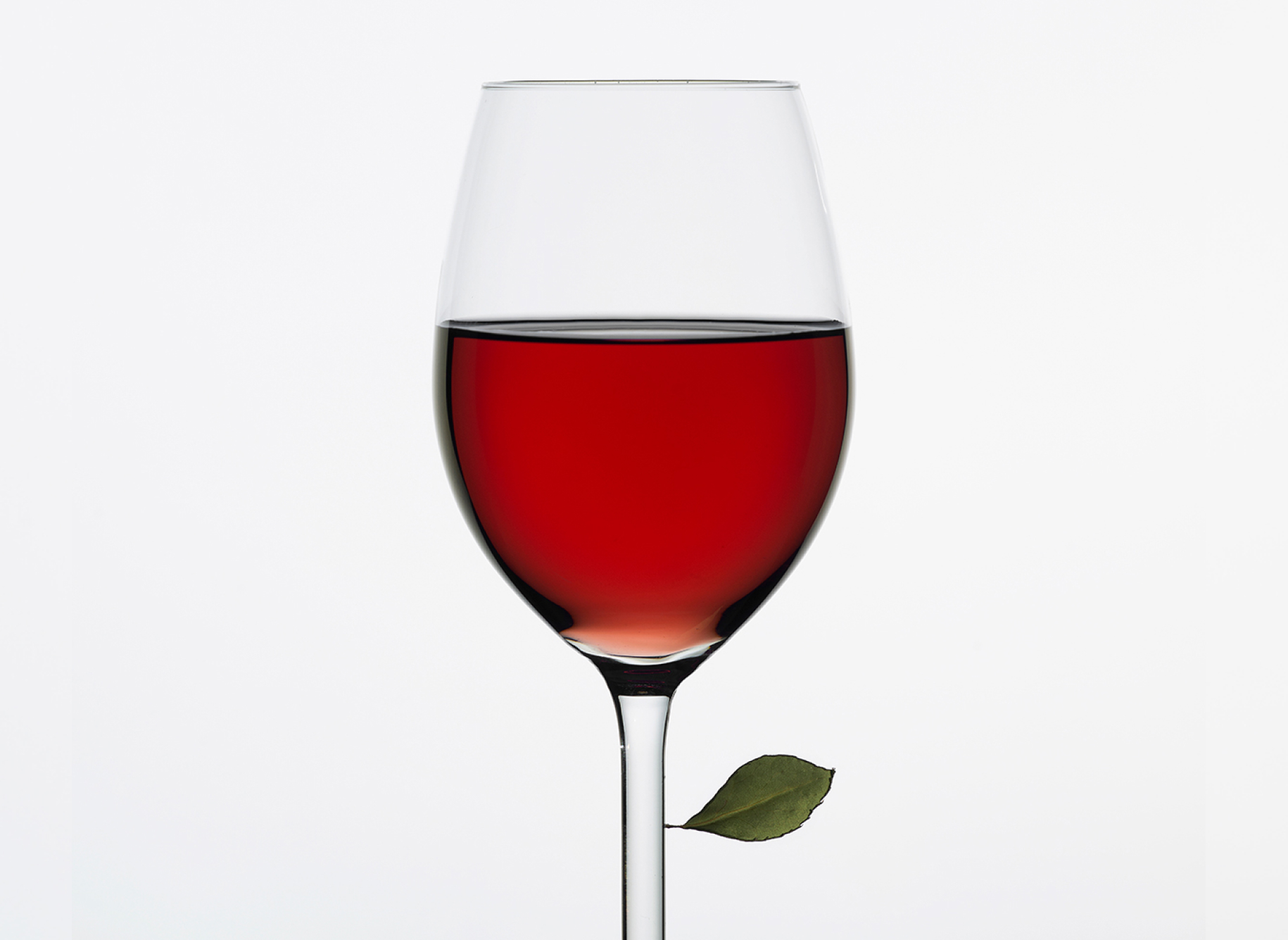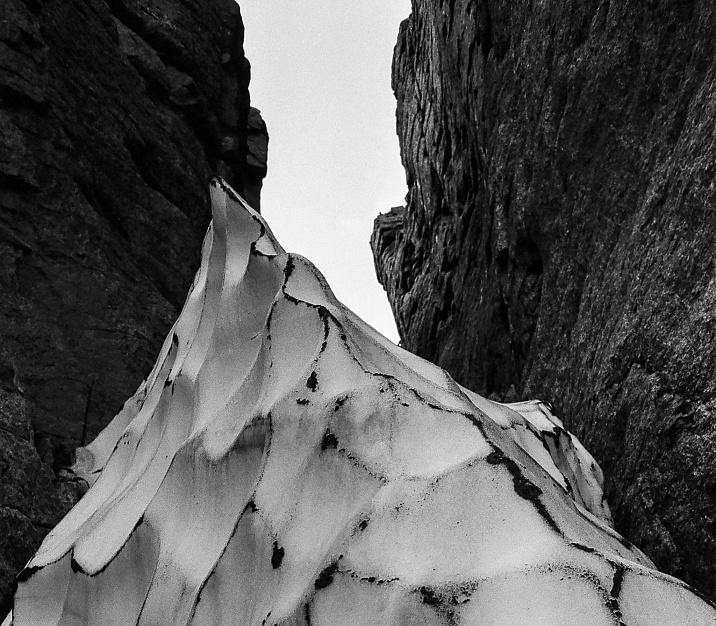On 22 January Erarta will open the exhibition of Alexander Pogorzhelsky representing opticocentric way of cognition
Alexander Pogorzhelsky primary takes painting as a documenting tool for his personal subjective vision. His practical and theoretical background (the Moscow State Academic Art Institute Named After V. I. Surikov and the Institute of Contemporary Art) allows him to make traditional painting the dominating technique in the optical and visual researches of everyday life. Opticentric way of cognition becomes the starting point of his non-standard studies of perception distortions.
Pogorzhelsky’s large-scale canvases resemble the blown-up fragments of photographs. Exploring the question of sight fixing on the everyday occasions, the author applies the formal searches of photography and cinematography to painting: finding the camera angle, cropping, varying sharpness and so on.
Alexander Pogorzhelsky is interested in “the borderland between the everyday routine and the beauty and uniqueness of the very moment”. Each painting series created by the author over the last 9 years shows different types of observations: random remarks and peeping over the self-acting in “Sport”, “Bathroom” and “The Lawn-mower” series, or close scrutiny of people and things in uninformative aspect (“Products”). An object, perceived as a simple abstract form, either loses its informative code, or becomes an issue of free interpretations just like in “Civilization” series, when a museum exhibit, an African mask or a helmet, taken out of context, become the equivocal ready-made, encouraging unconscious associations.
Our take on daily life is always very subjective, both surrounding space and objects are percieved only from the personal point of view. The inability to percept an object distantly, regardless its relationship with the subject builds up the main idea of the exhibition, striving to show not the concrete object, but the process of observation.
Even though Alexander Pogorzhelsky’s painting seemingly misses the narrative dynamics and those small details that cause consistent attention and gazing at the picture plane, it still features the element of procedurality. Pogorzhelsky aims to depict not the linear dynamics, but the human vision, which is essentially depthwardly directed and is a way out from the internal subjective self-awareness into the outer space. The set direction from the inner into the outer changes for the opposite in the moment of looking at the painting and seeing the subject’s perception. The depicted cognitive process is directly related to the philosophical tradition of phenomenology. For example, to Edmund Husserl’s idea that the structure of consciousness is a phenomenon where the subject and the object are merged into a united whole, and where perception is not a passive observation, but rather a directed intention.
Such outlook at Pogorzhelsky’s works makes us perceive them not as static, silent and random images (colorful plastic grocery bags, old knight’s helmets, pagan totem masks and other museum exhibits, taken out of everyday household scenes), but as sight targeting, active movement of a thought, guiding the consciousness to study the subject. Watching the object of the painting, we get to know the subject, whether it is the author or ourselves, we compare what he see with our personal experience.
The objects in the large-scale works are zoomed, blurred, cropped, and often can be extended beyond the frame. Thus the artist shows the changing of focal distance and focusing process taken from photography into painting to convey eyes fixing on the considered object.
Michel Foucault once commented on Edouard Manet’s works that it’s impossible to depict the distance, since distance cannot be set by the invisible perception, and the perception of distance is intellectual. Thus, by the means of signa, scaling the characters and objects, Pogorzhelsky depicts the invisible — the understanding of space extension.
By reducing the distance to the object to its minimum Pogorzhelsky depicts the moment of “capture” and concentrating of eyes on the object. According to the phenomenologist Maurice Merleau-Ponty we conceive the visible in the inseparable relationship with the tangible, as one body both sees and touches. The man immersed into the being both questions and “touches” the world by his eyes.
Alexander Pogorzhelsky’s works are not just passive fixations of reality, but a complex philosophycal and psychological materia. They always feature a hero, even if it is a monochrome sack of potatoes or bright stripes on a bathroom curtain. This hero and this subject participate in the process of active learning and observing.
The exhibition refers to a series of similar projects recently held in Moscow and St. Petersburg and dedicated to contemporary realistic art and concept of painting in contemporary art (“Russia. Realism. The Twenty-first Century” at the State Russian Museum, “Painting Beyond Painting” at the St. Petersburg Academy of Arts, “Russian Realism of the XXI Century” at the Museum of Russian History, “No Time” at Winzavod Centre for Contemporary Art etc). This is not the first solo exhibition by Alexander Pogorzhelsky, but in the beginning of 2016 it has successfully flown into the critical wave of disputes over the evolution of contemporary painting, the destiny of the beloved traditional art, and their mutations and co-existance in the ever-changing environment.
Elizaveta Shagina

